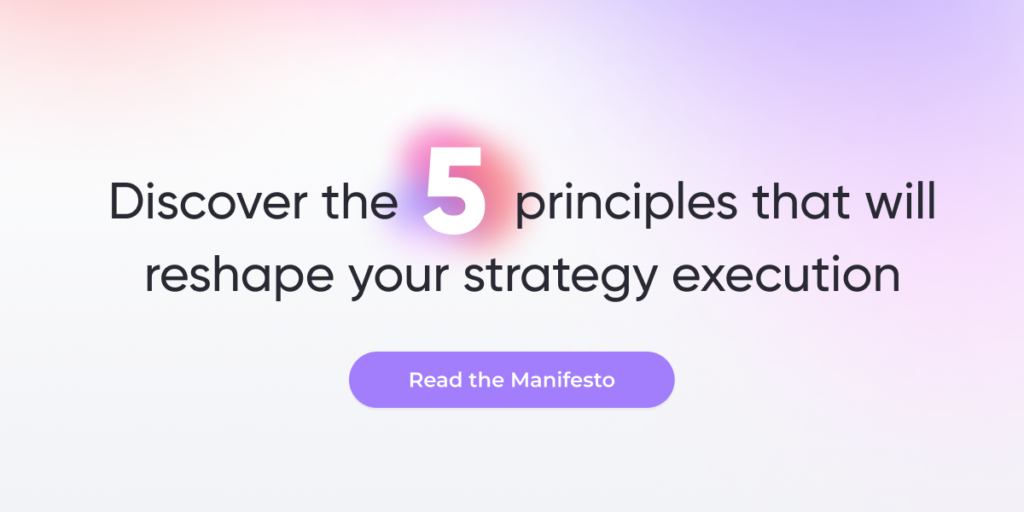What You’ll Learn
- The best, most authoritative research on employee productivity
- How the employee experience impacts workforce productivity
- Workplace trends that organizations need to understand
There are times when you just know something is true. You can feel it, deep down, in your gut.
Like, for instance, the idea that if you have a workforce of employees who believe in the company, feel like leadership genuinely appreciates their efforts, and respects them as people, they’re more likely to give their best effort every day.
It’s common sense, right?
But in business, we don’t use our gut for decision-making. We want data on our side. Fortunately, there’s a wealth of research exploring the current state of employee productivity and what can make workforces more efficient. Or, what detracts from productivity.
Studies have found a direct correlation between creating a great employee experience and improved productivity. At Firstup, we believe the foundation of that bond is clear, trust-building communication with every person. So, we pay close attention to the research that top firms such as Gallup, Deloitte, and McKinsey are producing.
They’re quantifying what we already can see happening in our organizations. The very nature of “work” is changing. The most successful companies understand the importance of learning what motivates and inspires employees – then applying those lessons in the workplace.
We know you’re interested, too.
It’s why one of the most popular features on the Firstup blog is when we compile the best available productivity statistics and trends. And if there’s any intriguing research that we missed, please let us know.
Enjoy!

General employee productivity
- U.S. productivity improved by 1.7 percent in 2019, which marked the largest gains in nine years. (Source: Marketwatch)
- Actively disengaged employees cost the U.S. $483 to $605 billion per year in lost productivity (Source: Gallup’s State of the American Workplace report)
- Productivity improves by 20 to 25 percent in organizations with connected employees. (Source: The McKinsey Global Institute)
- Superior talent is up to eight times more productive than average employees. (Source: McKinsey)
- High-performing employees have three things in common: talent, high engagement, and 10-plus years of service within the company. (Source: Gallup)
- The vast majority of the world’s 2.7 billion workers – 80 percent – don’t sit at desks, which makes them harder to reach and engage. (Source: The Rise of the Deskless Workforce report)
- Ninety-five percent of HR leaders said in a survey that employee burnout is “sabotaging workforce retention.” (Source: Kronos Incorporated and Future Workplace)
- In August of 2019, the highest number of Americans on record quit their jobs (nearly 4.5 million), according to the Bureau of Labor Statistics. That was roughly 3 percent of the non-farm U.S. workforce. (Source: CNBC)
Employee engagement and employee experience
- Thirty-five percent of U.S. employees are engaged at the job (enthusiastic and committed to their work), while 13 percent are actively disengaged (have miserable work experiences). (Source: Gallup)
- Of adults worldwide, 85 percent are not engaged or are actively disengaged on the job. (Source: Gallup’s State of the Global Workplace)
- Eighty-four percent of survey respondents rated improving the employee experience as important, and 28 percent identified it as one of the three most urgent issues facing their organizations. (Source: 2019 Deloitte Global Human Capital Trends)
- Only 53 percent of survey respondents felt their organizations are effective or very effective at creating meaningful work. (Source: 2019 Deloitte Global Human Capital Trends)
- Organizations that rank in the top quarter of employee experience achieve more than twice the innovation (51 percent to 24 percent), more than double the customer satisfaction (32 percent to 14 percent), and 25 percent higher profits than organizations in the bottom quarter. (Source: MIT Center for Information Systems Research)
- Organizations with higher employee engagement see 17 percent greater productivity. (Source: Gallup’s State of the American Workplace report)
- Organizations that score in the Top 25 percent on employee experience report nearly three times the return on assets and double the return on sales when compared to organizations in the bottom quarter. (Source: IBM)
- More positive employee experiences result in twice the level of discretionary effort (95 percent to 55 percent). (Source: IBM)
- One-third of global employees strongly agree with the statement: “The mission and purpose of my organization makes me feel my job is important.” By moving that ratio to eight in 10 employees, business units have realized a 51 percent reduction in absenteeism, a 64 percent drop in safety incidents and a 29 percent improvement in quality. (Source: Gallup’s Designing Your Organization’s Employee Experience)
Firstup allows us to make it happen
Workplace trends impacting productivity
- More than half of employees (51 percent) are searching for a new job or watching for openings. (Source: Gallup)
- About 21 percent of Millennials report switching jobs within the last year, and 60 percent are open to a different opportunity. (Source: Gallup: How Millennials Want to Work and Live)
- Employee turnover can be as much as 50 percent in the first 18 months. (Source: Society for Human Resource Management)
- Only 18 percent of Millennials expect to stay with their current employer for the long term. (Source: PwC: Millennials at Work)
- More than 50 percent of survey respondents said employees at their companies would have an easier time finding a job with a new employer than within their current organization. (Source: 2019 Deloitte Global Human Capital Trends)
- A majority of office workers (54 percent) say they would leave their job for one that offers flexible work time. (Source: Gallup)
- Eighty-six percent of respondents cited reinventing the way people learn as important or very important, making it the No. 1 trend for HR. (Source: Deloitte: 2019 Global Human Capital Trends)
- The share of independent workers at U.S. businesses has reached 16 percent, which is six million more people than a decade ago, according to the ADP Research Institute. (Source: CNBC)
- The Bureau of Labor Statistics believes “alternative work arrangements” in the gig economy account for 10.1 percent of the American workforce, while the Federal Reserve pegs the share at nearly a third of American adults. (Source: CNBC)
- An estimate of employees in the U.S. who work remotely at least part of time is 43 percent. (Source: Gallup)
- Remote workers take fewer breaks each day (22 minutes to 18 minutes) and work an average of four days a month more than in-office workers, according to a survey by gig economy platform Airtasker. (Source: Inc.)
- By 2030, 85 million jobs could be unfilled globally because there aren’t enough skilled people. That could result in $8.5 trillion in unrealized annual revenues. (Source: Korn Ferry)
- Sixty percent of survey respondents think “few people will have stable, long-term employment in the future.” (Source: PwC’s Workplace of the Future report)
- Twenty-three percent of survey respondents say “doing a job that makes a difference” is most important to their career. (Source: PwC’s Workforce of the Future)
Employee productivity challenges
- Once derailed from a task by an interruption, it takes an average of 23 minutes, 15 seconds to get back on track. (Source: University of California, Irvine)
- Information workers switch windows on average 373 times per day or around every 40 seconds while completing their tasks, according to a Microsoft study. (Source: Vox)
- The average American spends 5.4 hours a day on their phone. (Source: ZDNet)
- Estimated time people spend on social media each day is 153 minutes (Source: BroadbandSearch)
Impact of poor communication on productivity
- Inefficient workplace communication resulted in increased stress levels (52 percent of respondents), delays or failures to complete projects (44 percent), low company morale (31 percent), missed performance goals (25 percent), and lost sales (18 percent), according to a survey of U.S.-based executives. (Source: The Economist Intelligence Unit)
- Eighty-eight percent of corporate executives, employees, and educators say that ineffective communication is a key reason for workplace failures. (Source: Salesforce)
- People who report having a positive employee experience have 16 times the engagement level of employees with a negative experience, and are eight times more likely to want to stay at a company. (Source: McKinsey)
- 56% of workers don’t feel valued in their role. (Source: Firstup)
- 38% want employers to ‘create better lines of communication between executives and employees.’ (Source: Firstup)
- 20% want ‘company communications and messages delivered to the places I spend my work day’. (Source: Firstup)
Finally, we want to highlight one more trend that impacts workforce productivity. It captures how innovative leaders are viewing their companies and the roles they have in the broader world. CEOs said their No. 1 most important measure of success was “impact on society, including income inequality, diversity, and the environment,” according to Deloitte’s Global Human Capital Trends.
We believe that’s reflective of this key finding in PwC’s Workforce of the Future report: 25 percent of survey respondents say their ideal employer is an organization with values matching their own.
That’s why the best organizations understand that creating a great employee experience results in greater workforce productivity.











